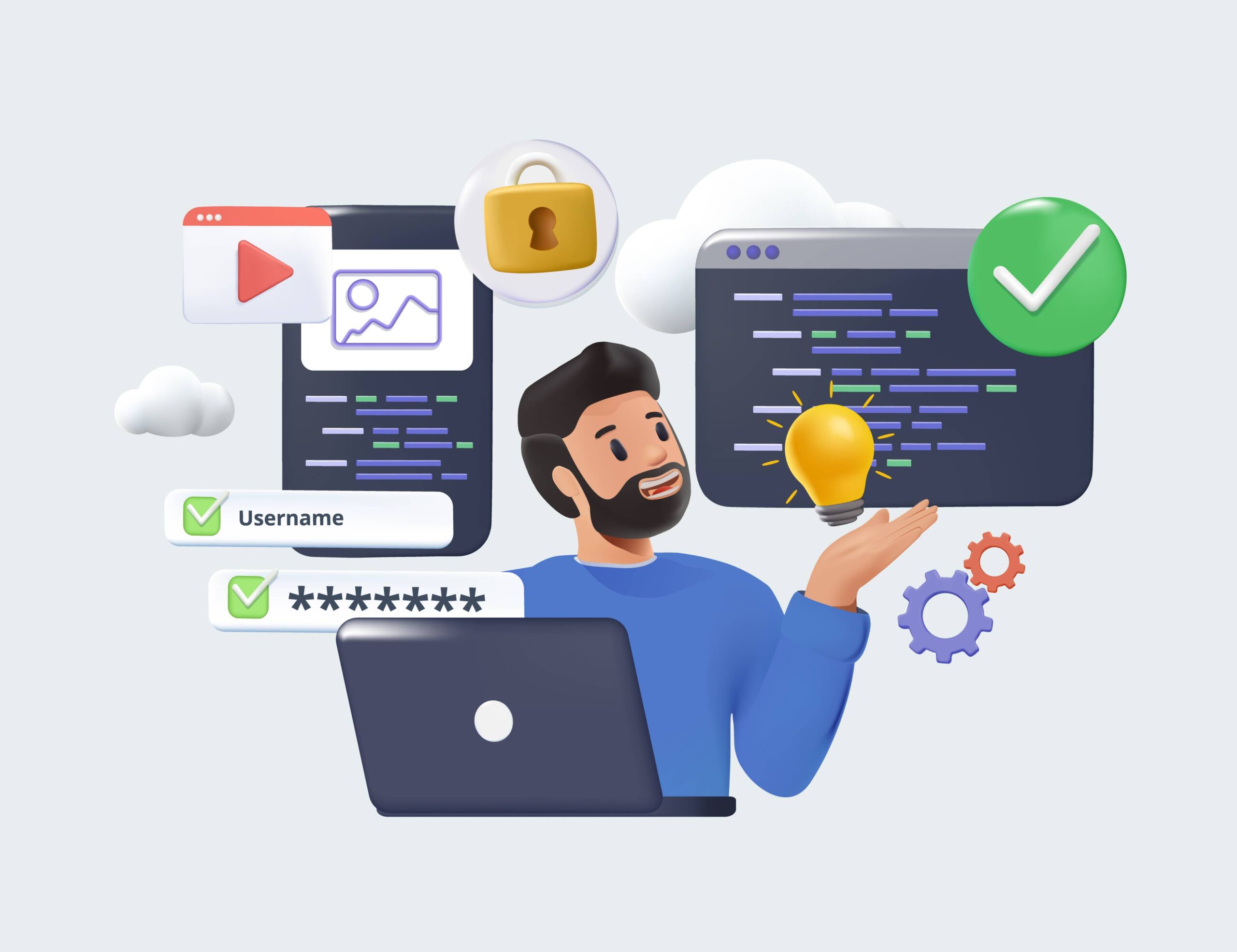Developing software is both an art and a science. While creativity and vision are vital ingredients, following proven software development best practices sets excellent teams apart. Companies that build software better, faster, and more efficiently have an enormous competitive advantage.
From planning and coding standards to testing and maintenance, software teams can implement multiple techniques to optimize their development lifecycle. Architecting the infrastructure properly, writing maintainable code, and applying security by design is equally vital. What development practices make the most significant impact?
There are definitive, tangible benefits for engineering teams that build expertise in modern software development best practices. Shortened release cycles, lower costs, better quality code, and more satisfied users are the rewards. Every software group aims to ship great products their customers love while avoiding the pitfalls of scope creep, high defect rates, and slow velocity that plague subpar squads.
This guide covers the 15 most impactful best practices contributing to practical software development services. Adopting these recommendations can help teams achieve quicker time-to-market, boosted productivity, and higher customer satisfaction ratings for their products. Read on to transform how your group builds software.
15 Software Development Best Practices
1. Agile Methodology
Agile is a project management methodology centered around the core values of rapid iterations, customer collaboration, and the ability to adapt quickly to changes. Fundamental techniques include breaking projects into short sprints with continuous input and feedback from end users.
It focuses on minimally viable products first and adding features incrementally, daily standup meetings during sprints to identify blockers, retrospectives after sprints for the team to tune its processes, and using Kanban boards and backlogs to visualize workflow and priorities.
Transitioning from traditional waterfall development requires significant cultural change across teams, managers, and executives. However, agile methodology offers many benefits. It ultimately delivers faster releases tuned to users’ needs by promoting iterative progress, flexibility, and stakeholder collaboration.
2. Code Quality
Good code is key for software. It prevents delays. Teams should make quality a priority.
Do unit testing. Catch bugs early. Check for issues often. Peer reviews help too. They spread knowledge. Refactor old code. Simplify what you can. Measure technical debt. Pay it down over time.
Have the same development and testing environments. This surfaces bugs before release.
Yes, build new features. But also focus on quality. Do reviews and testing. Refactor. Don’t just add new code. Maintain what you have.
3. Version Control
Use version control systems like Git. They track all code changes over time.
Version control helps teams in many ways. You can roll back buggy changes. You can make branches to test out new features. You can review the changes before adding them. This improves quality.
It allows everyone to collaborate smoothly. Even people working remotely in different places.
Not using version control causes problems:
- People overwrite each other’s work
- You can’t track where bugs came from
- It’s hard to work on new features
Overall, version control keeps everything organized. The team stays coordinated even as the code grows. Everyone knows what’s happening all the time.
4. Continuous Integration and Continuous Deployment (CI/CD)
CI/CD combines Continuous Integration (CI) and Continuous Delivery/Deployment (CD). It makes your process much faster. CI runs automated tests any time code gets merged in. This finds bugs earlier. CD automatically releases passed builds to users. This means quicker updates and responses to customers. It eliminates slow manual steps. CI/CD needs automating tasks like unit tests, UI tests, and code scans. The pipelines need monitoring too. Benefits include faster innovation, better quality, and less risk.
5. Test-Driven Development (TDD)
With Test-Driven Development (TDD), automated tests come before writing any code. This builds testing into your work from the start. TDD guides better design. Writing specific test cases first lessens later code changes. It leads naturally to higher quality and fewer bugs. The test suite also grows over time. This makes code much easier and safer to update later on. Updating old code becomes less scary and risky due to good coverage.
6. Emphasize Documentation
Good documentation is just as critical as clean code. Complete documentation helps new engineers join the team much faster. It lets all developers understand the code system. Docs make code easier to scale and maintain over time. Documentation guides proper architecture, usage, and future work across projects. Teams forget old decisions without docs. Key documents include architecture diagrams, inline code docs, API guides, admin manuals, FAQs, and more. Doc tools generate interactive API docs automatically.
7. Focus on User Experience (UX)
Software ultimately serves people who are using it to accomplish goals. User experience (UX) ensures that your software not only works correctly on a technical level but also delights people. Focusing on intuitive interfaces, interaction flows, and human-centered design increases user satisfaction and adoption rates. Techniques include user research, rapid prototypes to gather feedback, intuitive defaults aligned to expectations, and following established UI conventions. UX done right makes products enjoyable to use.
8. Regularly Refactor Code
As an evolving codebase grows, its quality gradually deteriorates through increasing complexity and technical debt. Refactoring restores clean structure incrementally without changing what the software does externally. Key refactor techniques include renaming vague variables/methods with meaningful names, breaking large procedures into smaller single-purpose ones, simplifying complex logic flows, moving related elements into classes/modules, and removing unused code completely. Proactively refactoring improves maintainability and makes extending software easier over time.
9. Security as a Priority
In the modern threat landscape full of data breaches, prioritizing application security is absolutely imperative. Techniques include following secure coding standards like input validation, adopting security controls like strict access management, conducting frequent audits to find vulnerabilities before attackers do, providing security training to engineers, keeping dependencies updated to avoid known exploits, establishing an inventory of sensitive data, and complying with applicable industry regulations through security certifications if necessary. Weaving security best practices into development from the start establishes critical discipline.
10. Foster Collaboration and Communication
Software development is ultimately a team effort requiring tight collaboration. Managers should actively promote open communication channels across teams. Practices like daily standup meetings within squads keep everyone in sync. Collaboration tools facilitate discussions around code changes pre-merge. Peer programming enables real-time code troubleshooting and mentoring. Post-mortems spread learnings across squads after major incidents. Solid documentation aids onboarding. Cross-functional teams prevent knowledge silos. With strong collaborative disciplines, staff stay energized and focused.
11. Stay Updated with Technology
The software ecosystem is changing at a very quick speed. To stay relevant, engineers must stay updated on the newest languages, frameworks, tools, and software development best practices. Learning should be done regularly. Team members should be changed over experimental prototypes. Attend webinars, meetups, and tech conferences. Encourage a curious culture. Establish measurable learning objectives. Teams maintain their competitiveness and develop deeper competencies over time by providing incentives for ongoing skill development.
12. Optimize for Performance
Application performance is tied directly to user satisfaction. Even minor delays lead to reduced engagement. Teams should actively monitor system performance under load. Common techniques include micro benchmarking hot code paths, reviewing slow database queries, performance testing at scale pre-launch, CPU and memory profiling across environments, and monitoring key application metrics. The best practices for optimization include combining costly processing, caching frequently accessed data, using efficient data structures, limiting non-essential work during peak hours, and avoiding pointless network calls.
13. Balance Features and Simplicity
Software packed with features may be attractive, but users become frustrated with overly complex products. Simplicity is achieved by sticking to core goals and essential functionality. Methods include evaluating proposed functionality with value delivered and prioritizing minimal viable products. Over time, maintaining conceptual reliability requires avoiding scope creep. Adoption is maximized by finding the ideal balance between capabilities and simplicity.
14. Embrace Feedback Loops
Regular feedback gives important insights into what users love and what needs to be improved. Teams should actively seek feedback through various channels, such as social media monitoring, user interviews, app store reviews, in-product surveys, and customer advisory boards. Instrumenting software to gather usage metrics guides data-informed decisions. Truly listening to feedback with an open mind leads to significant improvements. Closing feedback loops and keeping users informed about fixes maintains user loyalty.
15. Continuous Learning and Improvement
The field of software development progresses swiftly. Practices continually evolve. To sustain excellence, teams need a culture embracing learning. Each member should seek opportunities to expand skills and tools expertise through mentoring, reading, online courses, conferences and internal mobility. Learn from project post-mortems without blame. Set collective goals raising the capabilities bar higher each quarter. View every new challenge as a growth catalyst. Progress requires self-reflection and a growth mindset at individual and organizational levels.
Conclusion
Adopting these 15 software development best practices is not just about following rules. It’s about cultivating a mindset that values quality, efficiency, and user satisfaction. By embracing these practices, you set yourself up for success in an ever-changing technological landscape. So, start implementing these practices today, and watch your software development process transform for the better.


